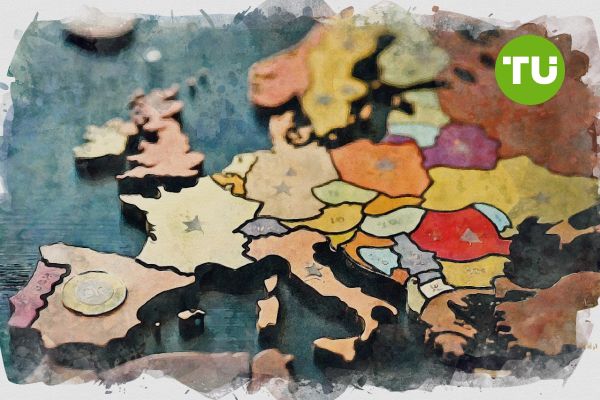Eurozone economy beats forecasts in Q1
 Eurozone GDP beats forecasts with 0.4% Q1 growth amid trade headwinds.
Eurozone GDP beats forecasts with 0.4% Q1 growth amid trade headwinds.
The Eurozone economy grew by 0.4% in the first quarter of 2025, doubling most forecasts and signaling surprising resilience amid U.S. trade pressure and subdued consumer activity.
Eurostat data released Wednesday showed the region outperformed expectations of 0.2% growth, with gains driven largely by smaller, southern European economies, reports Cryptopolitan.
Germany skirts recession, but momentum remains weak
Germany, the largest economy in the bloc, managed a modest 0.2% increase in GDP after a 0.2% contraction in Q4 2024, narrowly avoiding a technical recession. Growth stemmed from a slight rebound in consumer spending and business investment, though broader industrial weakness persisted. Key sectors such as autos and construction remain under pressure from rising costs and export uncertainty, especially as U.S. tariffs on European goods loom over the summer.
Berlin now faces a critical deadline in July, when a temporary reduction in U.S. tariffs from 20% to 10% is set to expire. Germany’s Economy Minister Robert Habeck warned last week that the country may post zero economic growth for the full year due to these trade frictions and downgraded business sentiment.
Southern Europe and Ireland lead the upside
The headline growth figure was buoyed by stronger performances in smaller economies. Spain and Lithuania both posted 0.6% growth for the quarter, while Italy added 0.3%. Ireland saw a sharp 3.2% quarterly gain — not unusual given its outsized exposure to multinational activity, which often distorts GDP readings.
France, meanwhile, edged up just 0.1%, reflecting sluggish domestic demand and limited momentum despite ECB easing.
ECB policy supportive but not immune to trade shocks
The European Central Bank has been trimming interest rates since mid-2023 to stimulate growth, most recently cutting its key deposit rate to 2.25% earlier this month. ECB President Christine Lagarde said the bloc’s disinflation path is nearly complete, setting the stage for continued policy support. Still, she warned that external shocks — particularly Trump’s tariff agenda — risk derailing recovery.
The ECB is due to update its growth and inflation forecasts in June, and any signs of trade escalation with the U.S. could influence the pace and depth of future rate cuts. Meanwhile, the EU has held off retaliatory tariffs but has indicated that talks with Washington must yield progress before July to avoid further escalation.
The latest data provides a rare upside surprise for the Eurozone. But with fragile growth in core economies and external risks mounting, the path ahead remains uncertain.
Recently we wrote that the euro eased slightly on Tuesday, trading around $1.1390 after nearing the $1.15 mark earlier this month, its highest level since 2021.













































































































































